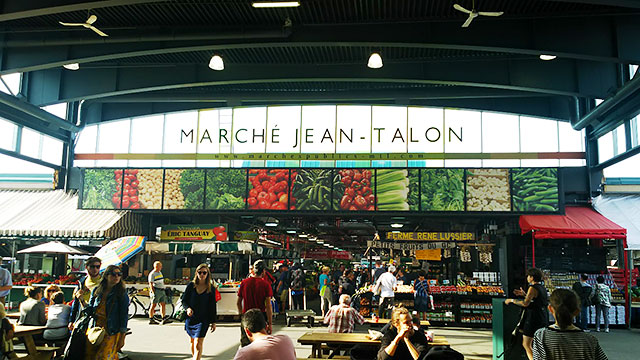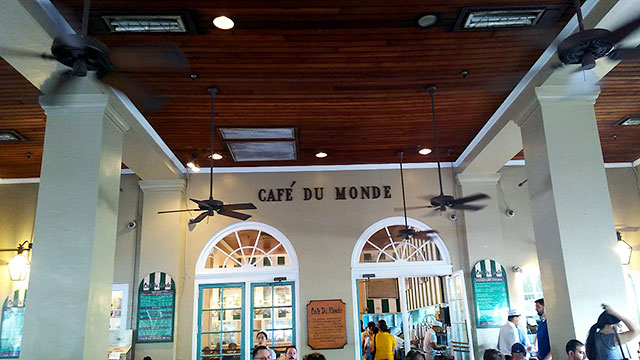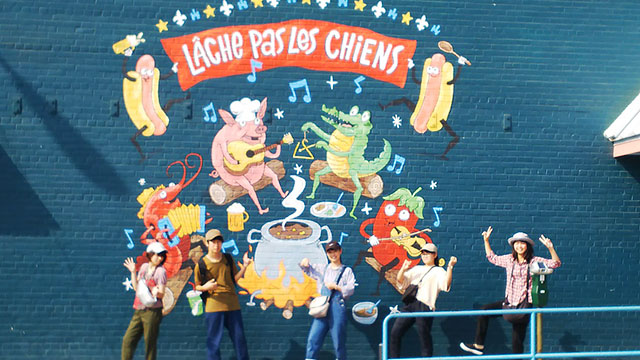Comparing Shopping, Commerce and Food Stores in Four Cities
I was interested in differences of shopping among four cities or regions visited in this program through we spent a few days in each city. I compare and consider on shopping and commerce situations.
First, I talk about Montreal. In the city centre, there are public markets, called “marché,” where the local farmers sell vegetable, meal, fish, cheese, flower, French baked sweets, wool products, and so on at many small shops under the one large roof. The people living in Montreal buy food products and daily goods there. Comparing with Japanese open-air market, I think Japanese markets are not open daily and became a sightseeing spot and that on the other hand, those in Montreal are daily open and their visitors are mostly near habitants rather than tourists.

Jean-Talon Market, one of the largest public market in Montreal
Second, in Prince Edward Island, Provincial capital city Charlottetown has few food stores. And farmer’s market is very small, far from the downtown and opened only one time per a week. On the other hand, there are many small retail shops, for example, groceries, cosmetics and real estate. And there are many restaurants, for example seafood, british pub and asian food for the tourists.
Third, in New Orleans, Louisiana’s largest city, there are many almost all of food shops and restaurants for example bars, cafés and cajun food or creole style restaurants. We ate the famous Beignets, powder sugered doughnuts at “Café du Monde” with street jazz music. Just near the café, there is the unique US public market “French Market”. This market is often called “marché.” This market does not deal with raw food, however there are many wearing and accessory shops and several fast food stands.

“Café du Monde”, celebrated coffee stand in French Quarter, New Orleans
and its typical dish “Beignets and Café au lait”
Last, in Lafayette, Louisiana Southern-Western Cajun Country capital city, downtown stores are almost closed. I saw them at morning or evening. They may be opened when I come to the downtown in other daytime… There are no raw food store and almost all of restaurants are also closed. About groceries, there is a street mall, which is similar to Japanese shopping “Shotengai,” but many shops are not opened. I felt this city and its mall losing their energy.
Lafayette downtown, several Cajun food stores and restaurants are open, but many stores are closed and we cannot find so many people

Drawing of Cajun foods and dishes on the wall of a restaurant in the corner of Lafayette Downtown.
“Lâche pas les chiens” is meaning “Taste our hot dogs too” in Cajun French derived
from Cajun famous phrase “Lâche pas la patate (Don’t leave the potato)” meaning “never give up”.
It is just my impression based on very short staying, however, I can feel differences of the four visited cities commerce. There are many commodities shops and stores in Montreal. I can observe that retail buisiness in Montreal is financially supported more by the inhabitants than by tourists.
In Prince Edward Island, there are a lot of restaurants and souvenir shops in Charlottetown Downdown and Cavendish, famous sightseeing site as Anne of Green Gables. So I imagine that this island economy depends on deeply tourists and concerned activities. In New Orleans, there are not only many bars, cafés and restaurants but also “marchés”, supermarkets and many retail stores. This means a lot of people living and coming there, so New Orleans is the city having large population and welcoming mass visitors. And in Lafayette, there are few shops, especially I could not find any souvenir store. I observe this city has small population market and fewer touristic atractives.
Therefore, from my experience in this program, I guess these differences I mentionned above should be generated by those of the cities, provinces or states, and countries It is important to real experience on everywhere.I think this short visit program enables us to grasp their characteristics through our staying.

